The best Italian souvenirs include heritage, quality, tradition and fun. Say goodbye to tourist tat and buongiorno to this guide on what to buy in Italy.
Also, don’t miss the best gifts for people who love Italy here.
Your Guide to What to Buy in Italy
When it comes to working out what to buy in Italy, you’re in for a treat. Italian souvenirs aren’t like picking up a plastic snow globe and hoping it survives the journey home.
Italian products are a joy to shop for and make great gifts for someone you love (see our guide to the best gifts for someone who loves Italy here.)
But when you’re actually planning your trip to Italy, look out for the following.

A Venetian Mask
Formed from papier-mache and decorated with gems, fur, fabric and feathers, these glamorous signs of anonymity symbolise the city’s famous Carnevale.
It’s easy to buy cheap Venetian masks in any tourist spot in Italy but for the real thing, seek out the talented artists in Venice itself.
Authentic Venetian Masks are made out of cartapesta (papier mache) which is light weight and breathable. If it’s made out of plastic, it was most likely produced in an industrial factory.
True Venetian masks are handmade. So, if you find yourself staring at a mask you’ve seen in another store, it’s most likely mass produced.
The price is also a red flag. Venetian masks take hours of work and will never cost less than 10-12 euros.
But most importantly, choose something you’d like. That is the main point, after all!
Top Tips
- Beware of any made of metal and ceramic (porcelain). Over recent years these materials have become popular in trinket shops. These masks may not be made by hand and are not based on historical models. Many are not even made in Venice.
- Buying directly from the mask artist ensures you’re buying an authentic and traditional mask.

Murano Glass
Murano glass comes from the Venetian island of Murano and is often described as the finest glass in the world. Artists have fashioned sand into glass since the 13th century and they fiercely protect the secrets behind their success.
The best place to buy Murano glass is to actually head to the island of Murano! It’s just a small fee by ferry to the island from Venice and you can visit any glass maker you want.
Once on Murano, steer clear of the docks, the hawkers and the touristy glass shops. The further away from the docks the better and a visit to the museum provides a handy introduction of what to look for.
All Murano glass is hand-blown, so you should look for bubbles and asymmetrical qualities. Any stickers that say, “made in Italy” or “made in Venice” are unlikely to come from Murano. New glass from Murano also comes with a certificate from the factory.
Top Tips
- When viewing Murano glass ,pieces look for the artist’s signature and pay attention to the threads (the coloured bands of glass swirled into a finished piece). The more intricate the thread, the higher the price and the greater the reputation of the maker.
Cashmere
The region of Perugia in Italy has become the king of cashmere craft, with a long and proud tradition of artisan crafts. Luisa Spagnoli had the bright idea of breeding Angora rabbits and then combing their hair to obtain wool for spinning and the textile industry is one of the main components of Perugia’s economy.
Several places run workshops in English and Italian where you can take hand-weaving courses and watch artisans use the jacquard loom.
Top Tips
- To find a top quality Italian souvenir made from cashmere, shop at one of the workshops near Perugia.
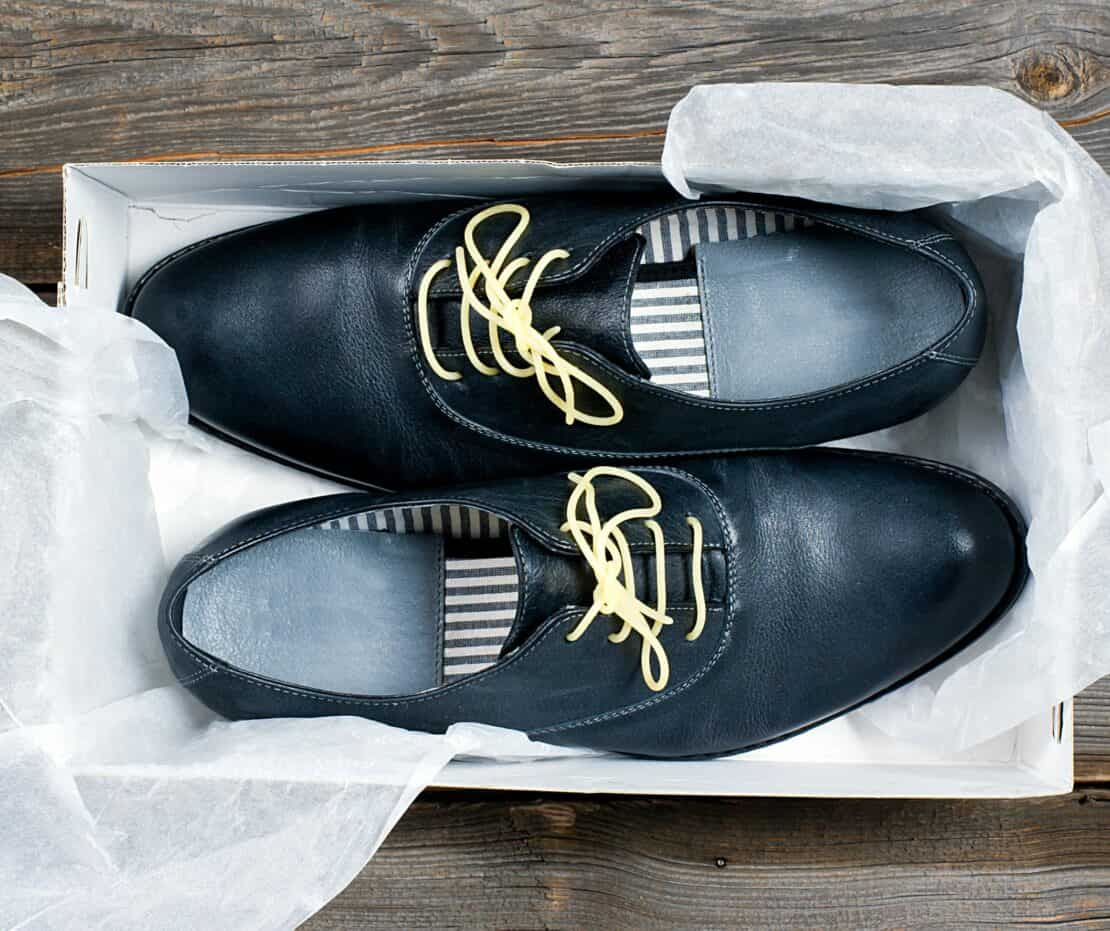
Leather
Italians have been working with leather for thousands of years and make some of the world’s best leather pieces. Today, Italy accounts for 16% of the world’s leather production and the industry focuses around Florence.
The fashion industry loves Italian leather for its beauty and long-lasting strength. Italian leather uses vegetable ingredients, which is why the leather is so resistant, elastic and smooth. Not surprisingly, the tanning process is a well guarded secret.
In Florence, plenty of shops and boutiques stock unique leather goods, in particular Artisanal Benheart, Cellerini and Misuri.
The first sign of inferior leather is an unmistakable chemical smell. Carefully inspect the stitching, tags and other details for imperfections. A good leather piece will be perfect down to the smallest detail as far as crafting is concerned.
Finally, look for the “Made in Italy” tag for authenticity and check with a local or a clerk at your hotel for recommendations and advice.
Top Tips
- To find more affordable leather good look in the small shops, outdoor stalls and open-air markets.
- You can find more one-of-a-kind pieces by visiting some of the smaller villages such as Orvieto, Pitigliano and San Gimignano.
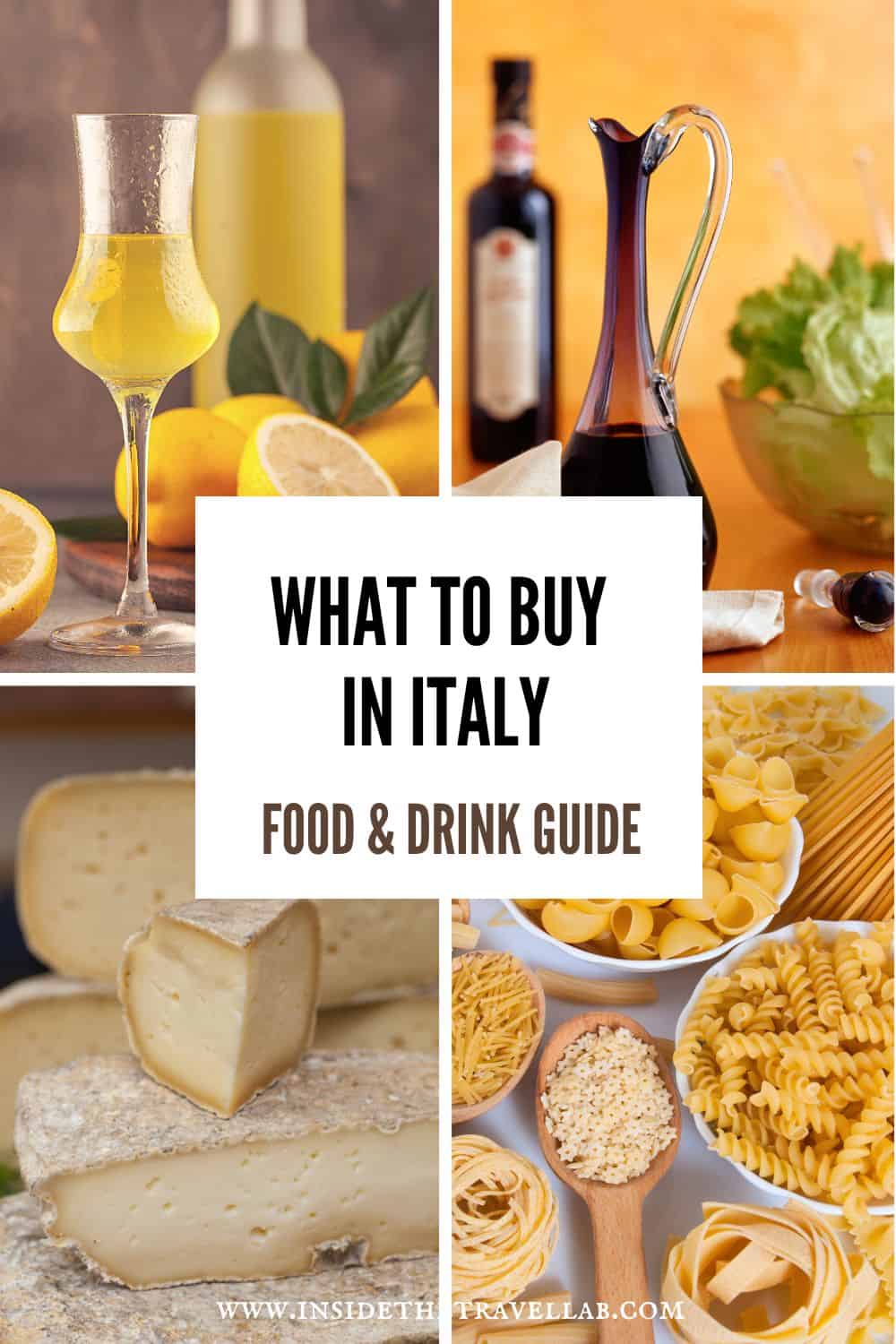
What to Buy in Italy: The Best Italian Food & Drink Souvenirs
Limoncello
You may know limoncello as the Italian drink but Italians are certain that it comes from the south.
Travel along the Amalfi coast and you’ll find lemons in baskets. Lemons on walls. Lemon shaped soap and even, if you look hard enough, lemons on trees.
Somehow, limoncello manages to dance around its perceived dalliances with cold and flu remedies and children’s playground sherbet to emerge as a serious alternative to whisky and gin in a gentleman’s oak polished drinks cabinet.
Did you know?
- Luxurious Roman villas in Pompeii have frescoes that show men enjoying limoncello.
- Limoncellos is made from only four ingredients (lemon peel, sugar, water and grain alcohol.)
Balsamic Vinegar
Balsamic vinegar is a very dark, concentrated, and intensely flavoured vinegar – and an amazing Italian souvenir.
It’s made wholly or partially from grape must: freshly crushed grape juice with the skins, seeds and stems. Balsamic’s perfect balance of sweet and sour ensures it is just as good on salads, meats and parmesan as on strawberries or custard.
However, not every balsamic can be truly balsamic. Only vinegar made in the Reggio Emilia and Modena provinces truly qualifies. They must follow strict rules laid out by local consortia – and can then use the name aceto balsamico tradizionale (traditional balsamic vinegar).
Always check the list of ingredients. If “must” is first, this is a good start. This vinegar will be thick and have complex and sweet flavours. If vinegar is listed first, that usually points to little or no ageing and is primarily used for de-glazing or balsamic reduction.
Top Tips
- The highest quality balsamics are labeled Aceto Balsamioco Tradizionale di Modena or Aceto Balsamico Tradizionale di Reggio Emilia, meaning they have been produced using traditional methods.
- Look for vinegar with an age of at least twelve years.
- Reading Balsamic vinegar of Modena is not enough to find a traditionally produced product as plenty of mass produced cheap imitations exist.
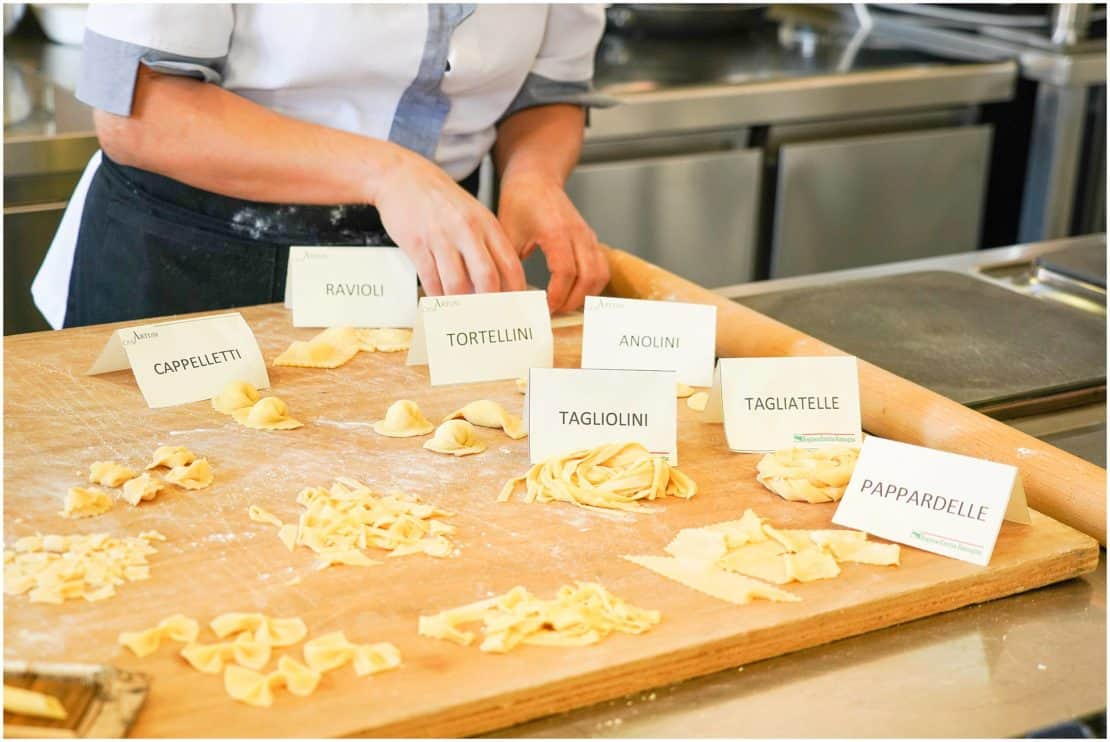
Pasta
To know everything there is to know about Italian pasta would take a lifetime. Every village, nay, every household has its own method and produce and understanding the story behind each one is half the fun. Take strozzapreti, the priest strangler, for example!
If you ask me, the best possible use of your time in Italy is to take an Italian cooking lesson, whether you’re learning how to make a real ragu or visiting the home of Italy’s first cookbook, Casa Artusi.
But the next best thing is to pick up bags of dried pasta and take them home in your hand luggage.
Top Tips
- The shorter the list of ingredients on the packet, the higher quality the product.
- If you have allergies to egg then watch out, even some dried Italian pasta contains egg.
- Learn how to make fresh pasta at Casa Artusi, home to Italy’s oldest cookbook.
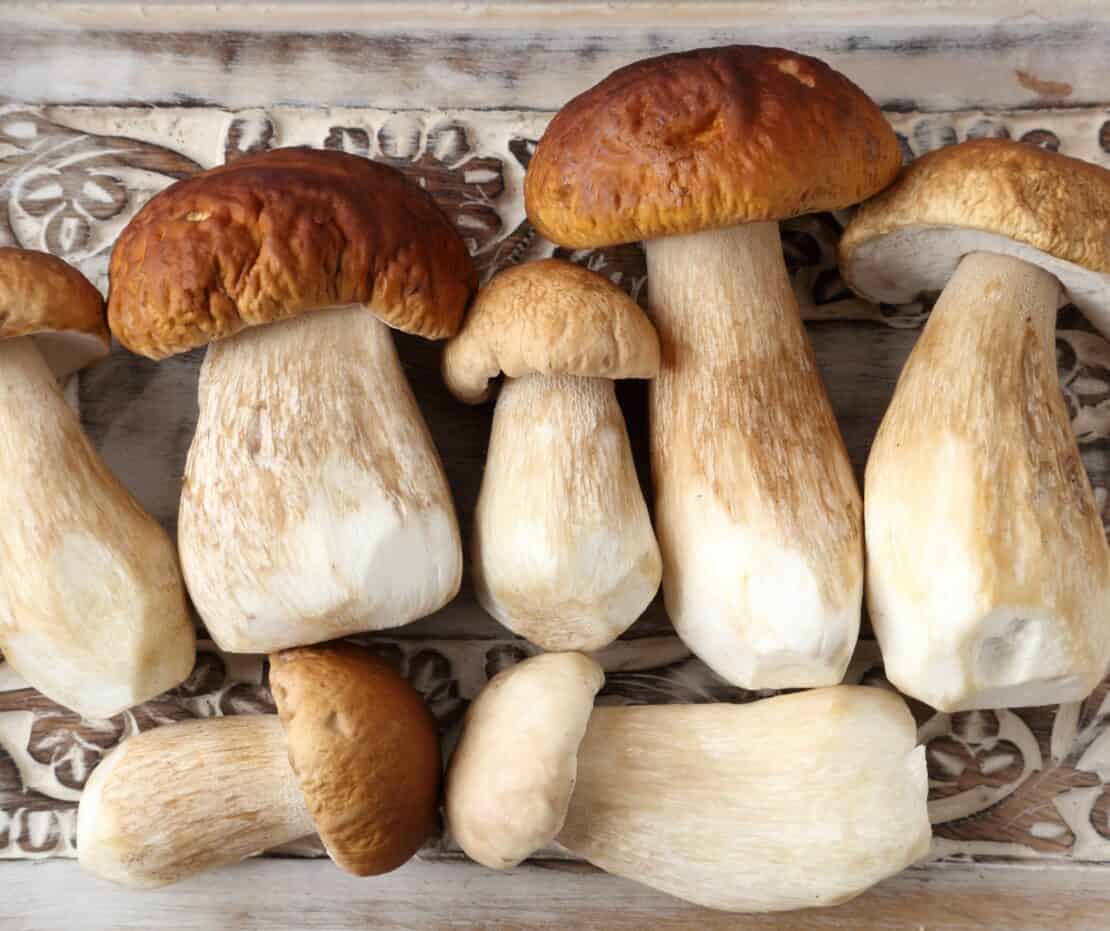
Porcini Mushrooms
Who can resist the strong, slightly nutty, slightly pungent taste of a porcini mushroom?!
Well, lots of people – my husband included – but I love them!
Porcini mushrooms are mycorrhizal, which means they have a symbiotic relationship with the roots of other plants. This also makes them hard to cultivate and difficult to find fresh. The most sought after sub-species is the Boletus edulis, or the king bolete. This is also the main one that people are talking about when they say porcini.
Although they’re most famously found in Italy, porcini also grow elsewhere in the world. They can grow up to 12 inches in diameter and weigh several pounds when mature.
Top Tips
- When buying fresh porcini, make sure to purchase only young mushrooms. A cap that is dark, soft, or covered with black spots is too mature for eating. This also applies for the underside.
- Lastly, check the stalk for small holes: worms like porcini mushrooms just as much as humans do. If you do find them, stand the mushroom on its cap and the worms will eat their way out of the stem. You may have to pick out some small worms but they are harmless and quite common. But. Ick.
- Check for a strong smell and avoid packages with too much dust or crumbled pieces.
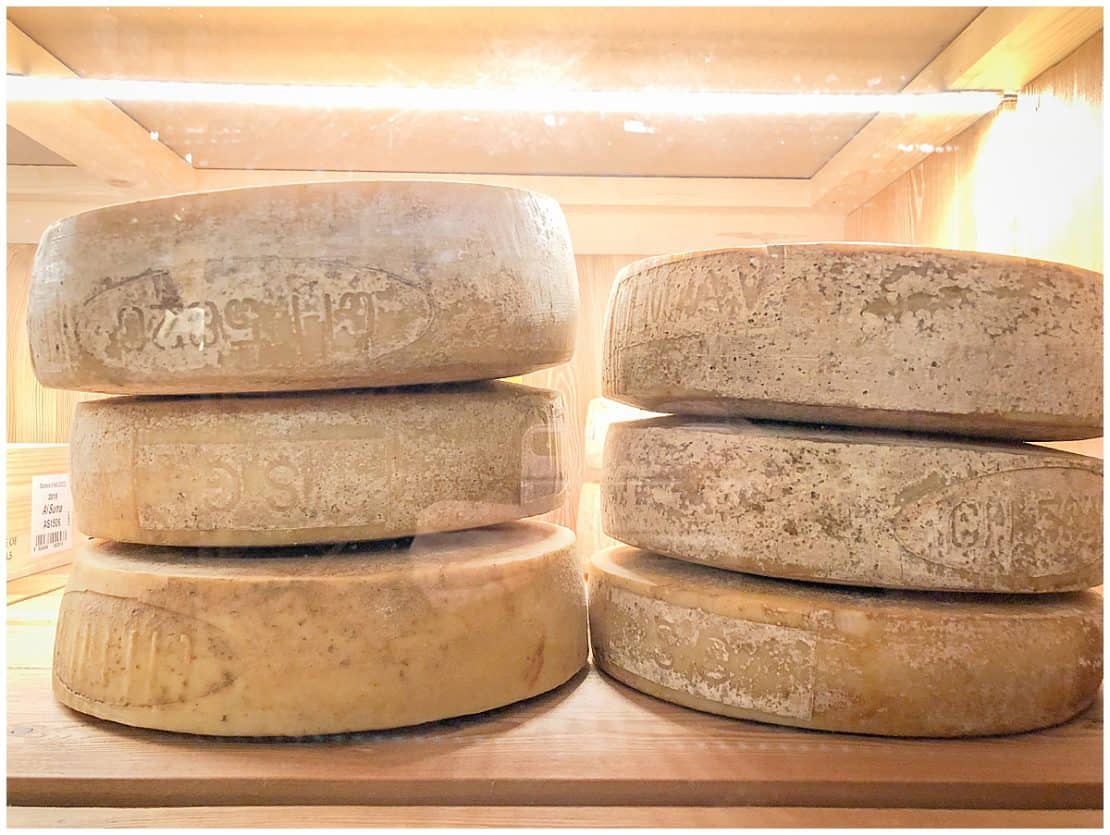
Cheese
One of the best things to bring back from Italy as a souvenir is a great big slab of cheese. And there are so many to choose from!
Parmesan cheese, or Parmigiano Reggiano is the world famous hard cheese from Emilia Romagna.
Mozzarella is the creamy softer cheese beloved on pizza. Bitto is a specialist cheese from Valtellina and the north and we’re only just getting started.
There’s Gorgonzola and Pecorino Romano and Sardo, from Rome and Sardinia respectively.
Look out for the bulbous Burrata cheese hanging from the rafters in Pugli, a time bomb of a cheese just waiting to be eaten.
Top Tips
- Hard cheese travel better than soft cheese, so fill your suitcase with Parmigiano Reggiano instead of the softer Burrata unles you’re feeling very brave.
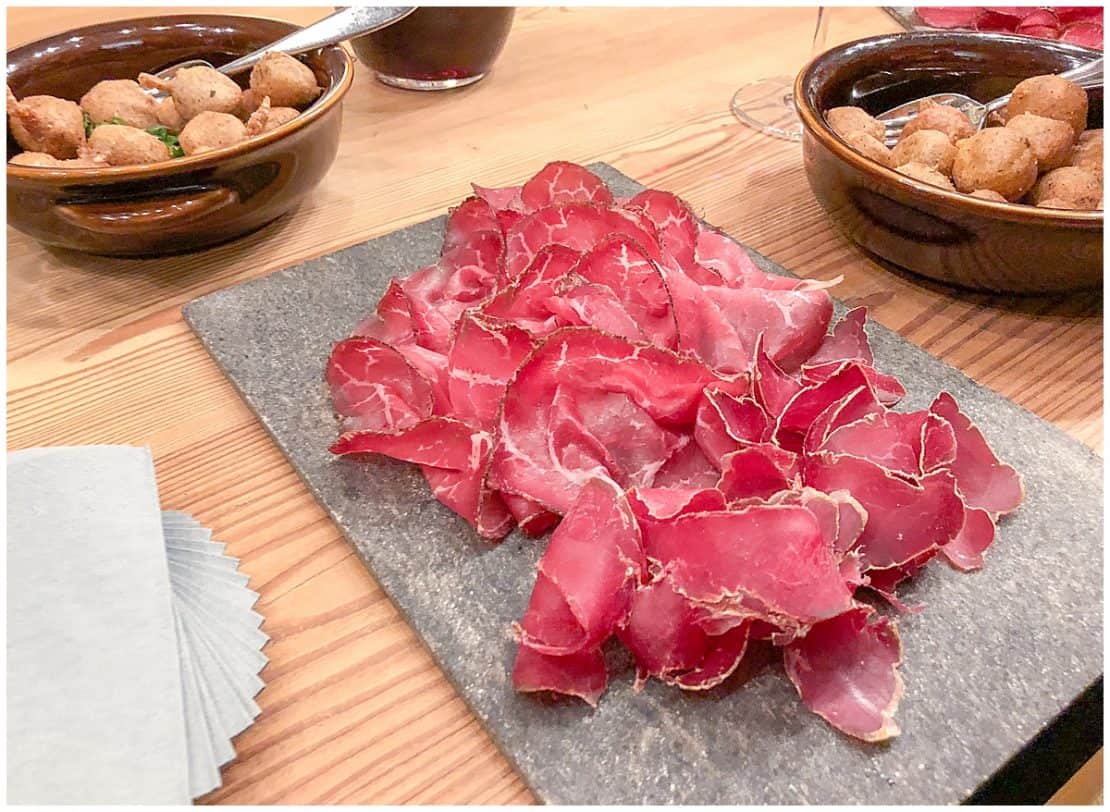
Meats
It all starts with the deliciously supple parma ham from, well, Parma in Emilia Romagna. But it doesn’t end there.
Bresaola, from the area around Chiavenna north of Milan, also deserves a place on your charcuterie platter, its herb infused slices of beef a treat with an aperitif.
Then there’s pancetta, salsiccia, salame and prosciutto. And don’t forget guanciale, the real ingredient for carbonara. Definitely not bacon.
Each region has its own type of sausage so it’s your duty to try them out before you buy. You can take that from me ;-)
Top Tips
- Check your own country’s customs regulations before you stock up.
- Outside the EU, you may not be allowed to import cured meat.
Olive Oil
Fresh, peppery, virgin olive oil is one of the best Italian souvenirs you can find, if you ask me. Bottle up this Mediterranean elixir and bring it home right away.
Top tip
- Ideally taste the olive oil before you buy. It should give you a kick at the back of your throat.
Wine
Don’t let those rolling vineyards go to waste! From light, sparkling whites to deep throated reds, wine makes up some of Italy’s most famous Italian souvenirs. Check out our guide to the best Italian wines here.
Crates of wine really do make some of the best gifts from Italy.
Chocolate
As with most enjoyable things in life, Italians know how to do chocolate well. Baci, which means kiss, is one of the most typical Italian chocolates. The factory in Perugia makes the bite size pieces and not only can you tour the factory but you can also take a chocolate making class there at the same time.
Bookmark this article on what to buy in Italy and the best Italian souvenirs on Pinterest for later.
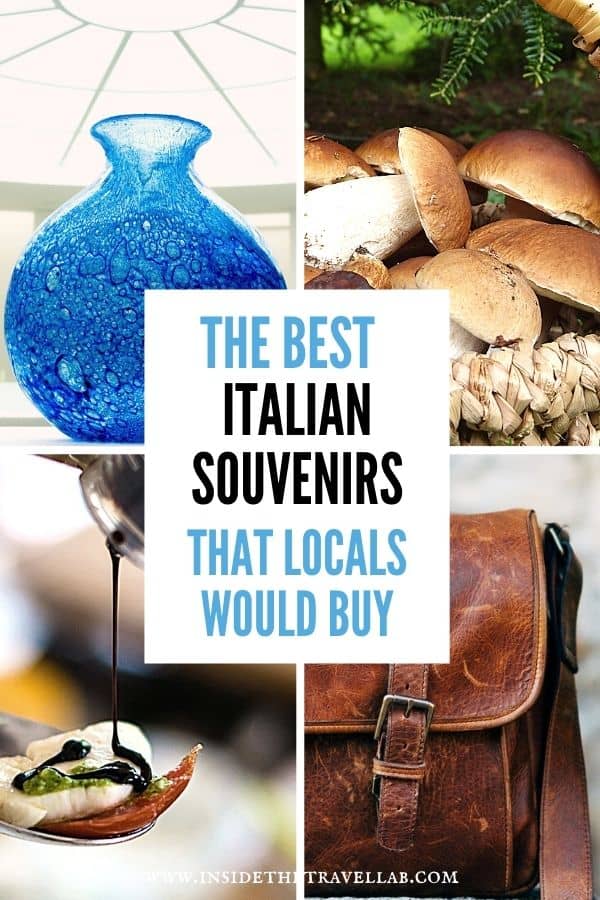
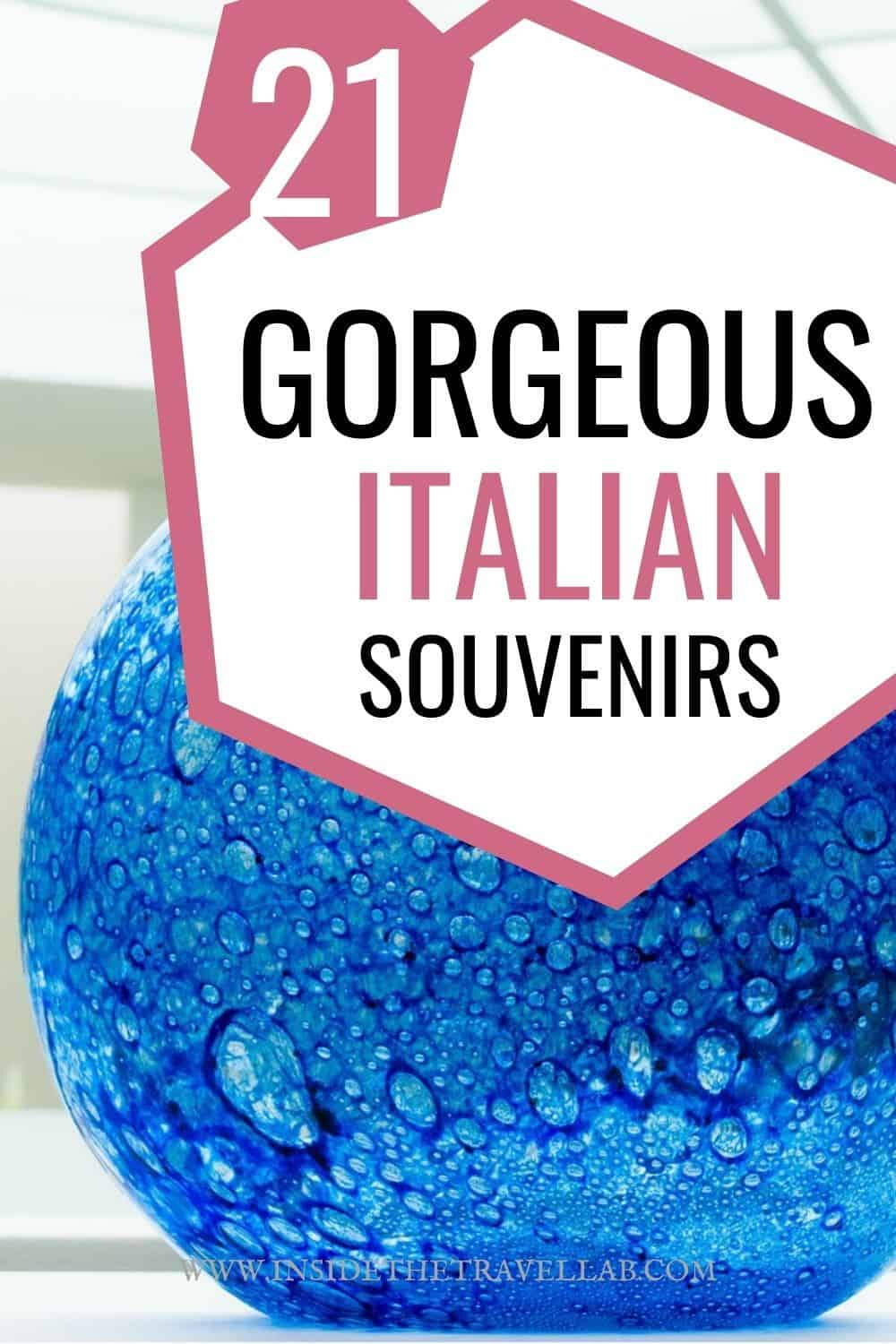
A Few Things to Consider When Souvenir Shopping in Italy
Bear in mind that you won’t be able to buy and take back anything you like. Within the EU, there is free movement of goods but elsewhere, you’ll find restrictions on certain goods, with some hefty customs fines.
You can check the latest US guidelines here if you’re travelling on to America.
Also, make sure that glass bottles and jars are well cushioned in your luggage so that your precious Italian souvenirs don’t break during transit.
The best things to buy in Italy are lightweight and nonbreakable if you have to fly home.
What are really the best Italian souvenirs you can bring back from Italy?
Shopping in Italy for high quality souvenirs can be a great way to interact with Italians, support local businesses and encourage not only traditions to survive but new practices to thrive. It really pays to take the time to avoid the kitsch that ends up in landfill and instead to really focus on top notch products that, well, make the world a better place.
- Need more inspiration? Check out our guide to the best souvenirs to buy in 2024.


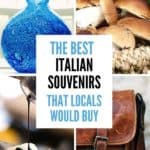
Great list of images and contents. i’m very pleasant about reading this topic. thanks for sharing this one.
It is best served chilled and is the second most popular liqueur in Italy. Yum!